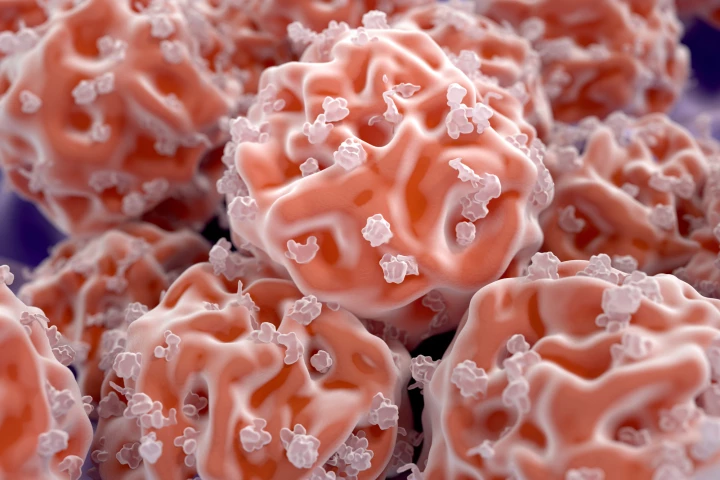University of California Santa Barbara
-
Upending long-held beliefs that testosterone levels fuel sexual desire, a new study has found that while the hormone plays a key role in reproductive success, elevated concentrations may instead drive 'courtship' efforts – particularly in single men.
-
Genetic studies have revealed that when male mosquitoes lose their hearing, they also lose their sex lives. The surprising discovery could lead to new ways to reduce mosquito populations and the diseases they spread.
-
Human stem cells can differentiate into any human cell. But dedifferentiation, differentiation in reverse, is implicated in several diseases. Now, researchers have uncovered a mechanism key to the process of stem cell dedifferentiation.
-
Scientists have identified two molecules that could help treat leukemia, in a way that’s far less damaging to healthy cells than existing chemotherapy. The compounds work using a different mechanism that’s more selective for cancerous cells.
-
If you say “jump” I say “how high?” – and a new robot from UC Santa Barbara says “over 100 ft.” The researchers say that’s higher than anything else has ever jumped, be it robot or animal, thanks to a unique design that multiplies its stored energy.
-
Robots are great explorers, but one environment that’s tricky for them to navigate is through the ground. Now, engineers at UCSB and Georgia Tech have developed a snake-like robot that uses a range of methods to burrow through soft sand or soil.
-
It may feel like 5G networks are only just becoming mainstream, but the next iteration, 6G, is already in the works. Samsung has now demonstrated its first prototype 6G system in an over-the-air test, using terahertz (THz) frequencies.
-
Google has announced that it has achieved “quantum supremacy,” the point where a quantum computer successfully performs an operation considered impossible for traditional computers. But rival IBM disagrees that this has been achieved at all.
-
Carbon dioxide in the atmosphere is a major driver of shifts in the Earth’s climate, and in the past too little CO2 has been associated with triggering ice ages. Now a team of scientists has found a surprising new mechanism that could lead to ice ages: Tropical tectonic activity.
-
In what may be seen as a worrying development to those troubled by the growth of the surveillance state, researchers at the University of California have demonstrated that they can count people through walls using only Wi-Fi signals.
-
Described as the world’s largest and most advanced superconducting camera, a new instrument dubbed DARKNESS is designed to filter out the blinding light of stars to see orbiting exoplanets in more detail than ever before.
-
According to new research, the colossal caldera of the Yellowstone supervolcano was created by not one, but two powerful and closely spaced eruptions that took place some 630,000 years ago. The eruptions were powerful enough to affect the global climate as the planet was recovering from an ice age.
Load More











